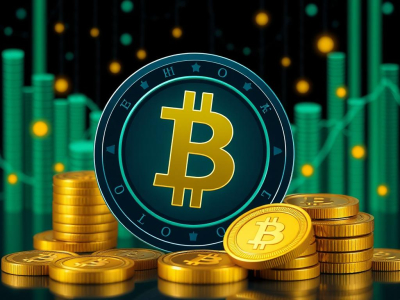
To harness the full potential of cryptocurrency payments, prioritize understanding the implications of decentralized finance (DeFi) innovations. DeFi offers a transformative approach to financial transactions, enhancing transparency and security. By eliminating intermediaries, it streamlines payment processes while reducing costs and risks associated with traditional banking systems.
The shift towards decentralization is not just a trend; it's a future-shaping movement that fundamentally alters how value is exchanged. With smart contracts and blockchain technology at its core, DeFi facilitates secure peer-to-peer payments without reliance on centralized authorities. This innovation not only democratizes access to financial services but also empowers users with greater control over their assets.
The impact of DeFi on cryptocurrency payments extends beyond mere efficiency. It fosters an ecosystem where participants can engage in lending, borrowing, and trading in a transparent environment. As businesses increasingly adopt these decentralized models, they enhance their operational agility and responsiveness to market demands. Embracing this paradigm shift positions entities at the forefront of finance's evolution.
Benefits of DeFi for Transactions
Decentralized Finance (DeFi) presents significant advantages for transactions in the cryptocurrency space, enhancing the overall financial ecosystem.
- Increased Security: DeFi protocols utilize blockchain technology, which ensures data integrity and security against fraudulent activities. Smart contracts automate processes, reducing the need for intermediaries and minimizing human error.
- Enhanced Transparency: All transactions on DeFi platforms are recorded on public blockchains. This transparency promotes trust among users, as they can verify transactions independently without relying on a central authority.
- Lower Costs: By eliminating intermediaries, DeFi reduces transaction fees significantly. Users can transact directly with one another, allowing for more competitive pricing and increased access to financial services.
- Accessibility: Anyone with an internet connection can access DeFi services, regardless of geographic location or financial status. This democratization of finance enables underbanked populations to participate in the global economy.
- Speed of Transactions: DeFi transactions typically occur faster than traditional banking methods. Instant settlements allow businesses and individuals to manage cash flow more effectively and respond swiftly to market changes.
- Innovation in Financial Products: The DeFi sector is rapidly innovating new financial products such as yield farming, lending protocols, and stablecoins that cater to diverse user needs and preferences.
The impact of these benefits shapes not only individual user experiences but also the broader cryptocurrency payments landscape, steering it towards a more secure, efficient future.
Challenges in DeFi Adoption
To enhance the adoption of decentralized finance, it is crucial to address key challenges such as regulatory uncertainty and security concerns. Regulatory frameworks around cryptocurrency and blockchain technology are still in development. This ambiguity creates hesitancy among potential users and institutions regarding compliance and legal implications.
Security vulnerabilities remain a significant barrier. Smart contracts, while innovative, can be exploited if not properly audited. High-profile hacks have eroded trust in some DeFi platforms, impacting user confidence in utilizing cryptocurrency for payments.
Scalability issues further complicate the landscape. As transaction volumes increase, many blockchain networks face congestion that leads to higher fees and slower processing times. These factors deter users from engaging with DeFi solutions for everyday transactions.
User experience also plays a critical role; complex interfaces can alienate non-technical users, limiting participation. Simplifying onboarding processes is necessary to foster broader engagement with decentralized financial products.
Finally, liquidity challenges hinder the efficiency of DeFi protocols. Low liquidity can lead to slippage during trades, negatively impacting users' overall experience with cryptocurrency payments.
Security Risks in DeFi Payments
Prioritize multi-signature wallets for transactions to enhance security. Decentralized Finance (DeFi) eliminates intermediaries but introduces unique vulnerabilities. Smart contract exploits, such as reentrancy attacks, can lead to significant losses. Conduct thorough audits of smart contracts before engaging in DeFi payments. Utilize platforms with a proven track record and transparent code reviews.
Phishing attacks targeting users' private keys are common in this space. Implement hardware wallets to store cryptocurrency securely, minimizing exposure to online threats. Educate users on recognizing fraudulent schemes and maintaining secure practices when interacting with DeFi protocols.
Network congestion can affect transaction speed and cost, potentially leading to errors or missed opportunities during critical payments. Monitor blockchain performance and consider layer-2 solutions that optimize transaction efficiency while preserving security measures.
Regulatory uncertainties surrounding DeFi can expose participants to legal risks. Stay informed about evolving regulations in various jurisdictions, ensuring compliance while participating in decentralized finance activities. Awareness of these factors will help mitigate risks associated with adopting innovative financial systems.
Future Trends in DeFi Usage
Integration of decentralized finance (DeFi) into everyday cryptocurrency payments is set to gain momentum. Future trends indicate a shift toward increased transparency in financial transactions, driven by blockchain technology. As more users demand clarity, platforms that prioritize open-source protocols will likely rise to prominence.
Security will remain a paramount concern. Innovations in smart contract auditing and insurance mechanisms are expected to enhance user confidence. Projects focusing on building robust security frameworks will attract a larger share of the market, as users seek safer avenues for their assets.
Decentralization of financial services will continue to disrupt traditional banking systems. Expect an increase in peer-to-peer payment solutions that eliminate intermediaries, reducing fees and transaction times. The rise of stablecoins tied to real-world assets could provide a reliable medium for everyday transactions within DeFi ecosystems.
The user experience will undergo significant enhancements through intuitive interfaces and streamlined processes. Simplified access to DeFi tools can expand adoption among non-technical users, bridging gaps between traditional finance and cryptocurrency.
Interoperability among different blockchains is crucial for the future of DeFi payments. Solutions enabling cross-chain compatibility will facilitate seamless transactions across various platforms, enhancing liquidity and usability.
As regulatory frameworks evolve, compliance-focused DeFi projects may emerge as leaders in the market. Balancing innovation with adherence to regulations can attract institutional investors seeking exposure to cryptocurrency without compromising security or legality.


You can be the first!